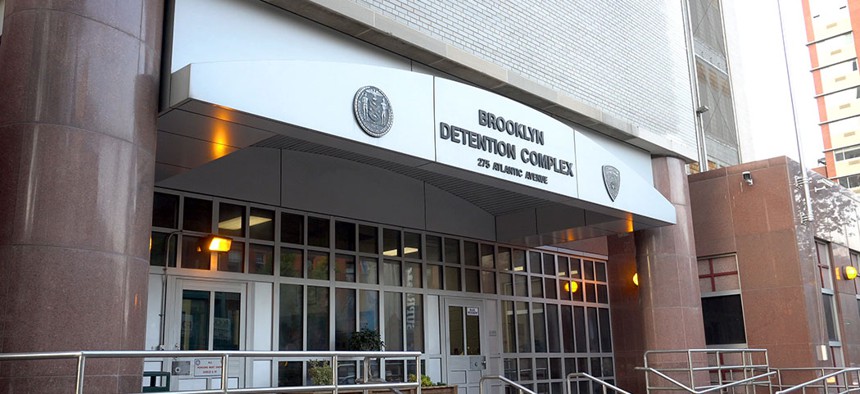Critics of New York’s new law eliminating bail for most nonviolent crimes are complaining that people accused of crimes that are no longer bail eligible are allowed to go free and commit more crimes.
“Caught for a minor holdup, you’ll be charged and released – and can do it again, get caught again and be released again, time after time after time,” reads one New York Post editorial from earlier this month.
The underlying premise of this argument is that the only options are jail, bail or simply being released. But there is another option that isn’t widely discussed: being released but with some form of pretrial supervision or restriction. These measures can range from scheduled check-ins by phone to electronic monitoring leading up to one’s court date. This, of course, may not address concerns raised about people committing more crimes. But it does provide an alternative to cash bail – which is primarily meant to get defendants to return to court – that allows people to avoid jail while still facing pressure to make their court date.
One such pre-trial initiative in New York City is anticipating more cases – and more serious cases – under the new bail law. New York City’s supervised release program, which was put in place four years ago, allows judges to keep defendants out of jail as long as they regularly check in with a social worker provided by regional nonprofits in advance on their court date. How often they must check in varies according to a judge’s discretion – they can be as frequent as one phone call per month up to one in-person meeting each week. Social workers can also connect them with other services such as housing and mental health support on a voluntary basis.
But the program’s scope has broadened somewhat under the recently passed the state’s bail reform law, which restricts the use of cash bail for most misdemeanors, nonviolent felonies and some violent felonies.
“Before the bail law, supervised release was largely seen as an alternative to money bail and it was something defense attorneys often raised as an option,” said Aubrey Fox, executive director of the New York City Criminal Justice Agency, which supervises the program in Queens. It also could not be used for people accused of committing violent offenses, unless they were a minor.
Now, most charges are no longer eligible for cash bail and judges are required to set the least restrictive requirement to ensure a defendant returns to court. Supervised release is one such option judges can now impose on people charged with any crime, though most people will still be released on their own recognizance, which means being let free without any restrictions.
In anticipation of the expected three- to fourfold increase in program participants, New York City increased its investment into the supervised release program last year. The Manhattan District Attorney’s office pledged $100 million to the program and the New York City Council dedicated $7 million.
“We’ve been in a major hiring push in order to engage the kinds of social workers that we need to deal with this,” said Greg Berman, the outgoing head of the Center for Court Innovation, which runs supervised release programs in the Bronx, Brooklyn and Staten Island. “We’re currently running around looking for space to house all these people and we’re working with the mayor’s office to create the proper protocols and procedures.” Fox also said that hiring social workers with experience in the criminal justice was especially important. And anecdotally, both said it seemed that caseloads were increasing at their organizations.
Given that the bail reform law has just been implemented within the past few weeks, more time is needed to see how well supervised released operates now, Berman said. Past evidence has shown some success. Citywide, the court appearance rate for participants was 88%, according to the city’s latest data from January 2019 to March 2019. But New York City also generally performs well on getting defendants to return to court: the return rate is also 88% for people released on their own recognizance and three percentage points higher for those released on bail.
Other localities throughout the state have similar supervision programs, though Fox said most pretrial services outside of New York City are less robust.
“A lot of pretrial programs in the rest of the state might go to the jail, find someone and try to get them out,” he said. “Well, what happens when someone doesn't go to jail in the first place?”
Not all criminal justice advocates are fans of pretrial supervision, however, arguing it still burdens people before they are even found to be guilty.
“While ‘supervision’ may sound good on the evening news, it is a terrible thing for those caught up in it – many of them struggling to get by, working two jobs with inflexible hours while juggling childcare and other responsibilities,” wrote Robin Steinberg, then-executive director of the Bronx Defenders, and David Feige, then-board chair of the Bronx Freedom Fund, in the Marshall Project after the city program was first announced.
New York City is investing in other pre-trial supportive services in light of the bail reform law. It’s expected to pick a provider this month to supervise Atlas, a new program to allow those released without conditions to voluntarily connect with social services. The organization chosen to run Atlas will then contract with 20 to 30 smaller community groups to administer support to people, whether it’s finding affordable housing or job training.
The Liberty Fund – a charitable bail fund created by The Doe Fund, the New York City Council and the Mayor’s Office of Criminal Justice – is launching a similar initiative. The organizations will be able to provide low-income people charged with misdemeanors who are without supervision court management services, which includes court date reminders, social service referrals and emergency access to MetroCards or food vouchers. Its scope will be limited to Manhattan and Brooklyn, however.


